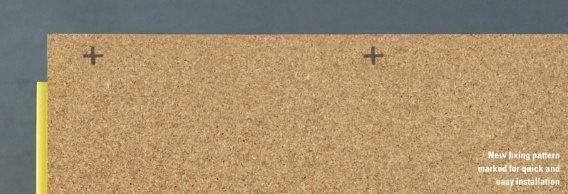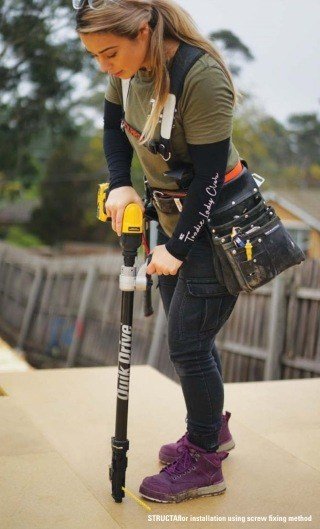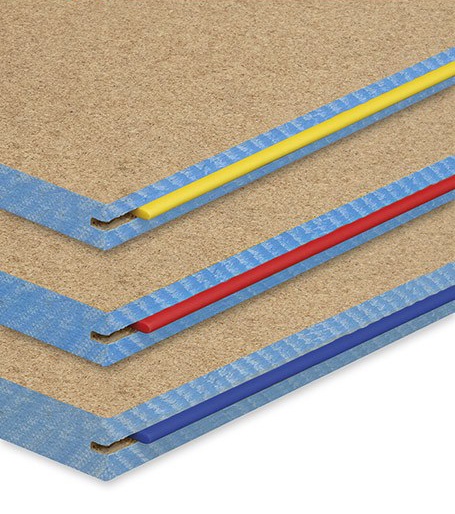Compliance
Produced to meet Australian/New Zealand General Purpose AS/NZS1860.1 Particleboard Flooring Part 1: Specifications.
Industry Information
Environmental credentials are detailed in the Wood Solutions Environmental Product Declaration: Particleboard
H2 Termite Treatment Brand Numbers
- Gympie Plant 445 70 H2
- Oberon Plant 135 70 H2
- Mount Gambier Plant 638 70 H2
Formaldehyde Emission
Formaldehyde emission meets the E1 standard requirement of ≤1.5 mg/L when tested in accordance with Australian/New Zealand Standard AS/NZS 4266.16:2004 Method of test 16: Formaldehyde emission - Desiccator method.
Installation Instructions
Please refer to the STRUCTAflor Installation and Design Manual
The Australian Standard allows for either flexible or rigid construction adhesive to be used. Screw fixing is the preferred method, however the Australian Standard allows for either screw or nail fixing into timber joists.
AS1860.2 Particleboard Flooring Part 2: Installation sets out the minimum performance requirements for the installation of particleboard flooring which are acceptable to building authorities in Australia.
Thermal Insulation
The thermal conductivity of STRUCTAflor is 0.12W/mK. Thermal resistance (R-values) calculated in accordance with the relevant provisions of Australian General Purpose AS/NZS4589.1 for the nominated thicknesses are:
- YELLOWtongue 19mm R0.16
- REDtongue 22mm R0.18
- BLUEtongue 25mm R0.21
Storage
STRUCTAflor is designed to withstand full weather exposure for up to five months.
Because of this there is a tendency to leave packs unprotected on site before installation. Packs of STRUCTAflor must be protected from the weather until it is installed as moisture penetration of the product before installation may lead to gaps occurring at the flooring joints when the product dries out.
When storing outside, ensure packs are kept clear off the ground. Cover with waterproof sheeting laid on timber battens so that air circulates freely between the waterproof cover and the product.
Exposure
The product may be exposed to the weather for up to five months. However, it is always advisable to enclose the building as soon as possible after laying the floor. During the exposure, prevailing weather conditions can influence the surface condition of the board and may cause minor swelling following the enclosure of the building, this can be removed by sanding.
The depth of material removed shall not exceed the following:
- 1mm – Over the general panel area
- 2mm – Within 50mm of any supported edge
Remove any water that ponds on the platform by sweeping or by drilling holes (no larger than 8mm in diameter and no closer than 1 meter apart).
Design Parameters and Safe Loads
Design parameters information and safe load tables are included in the EWPAA Particleboard Structural Flooring Design Manual
Safety & Waste Disposal
Gloves, dust masks and glasses should be worn at all times when working with timber. Please refer to Material Safety Data Sheet (MSDS) for full details.
Off-cuts can be disposed of as normal landfill waste. Do not burn treated timbers. Please refer to above Material Safety Data Sheet (MSDS) for full details below.
Environmental Information
Produced to meet Australian/New Zealand General Purpose AS/NZS1860.1 Particleboard Flooring Part 1: Specifications.
Formaldehyde emission meets the E1 general-purpose requirement of ≤1.5 mg/L when tested in accordance with Australian/New Zealand General Purpose AS/NZS 4266.16:2004 Method of test 16: Formaldehyde emission - Desiccator method.
Environmental credentials are detailed in the Wood Solutions Environmental Product Declaration: Particleboard







